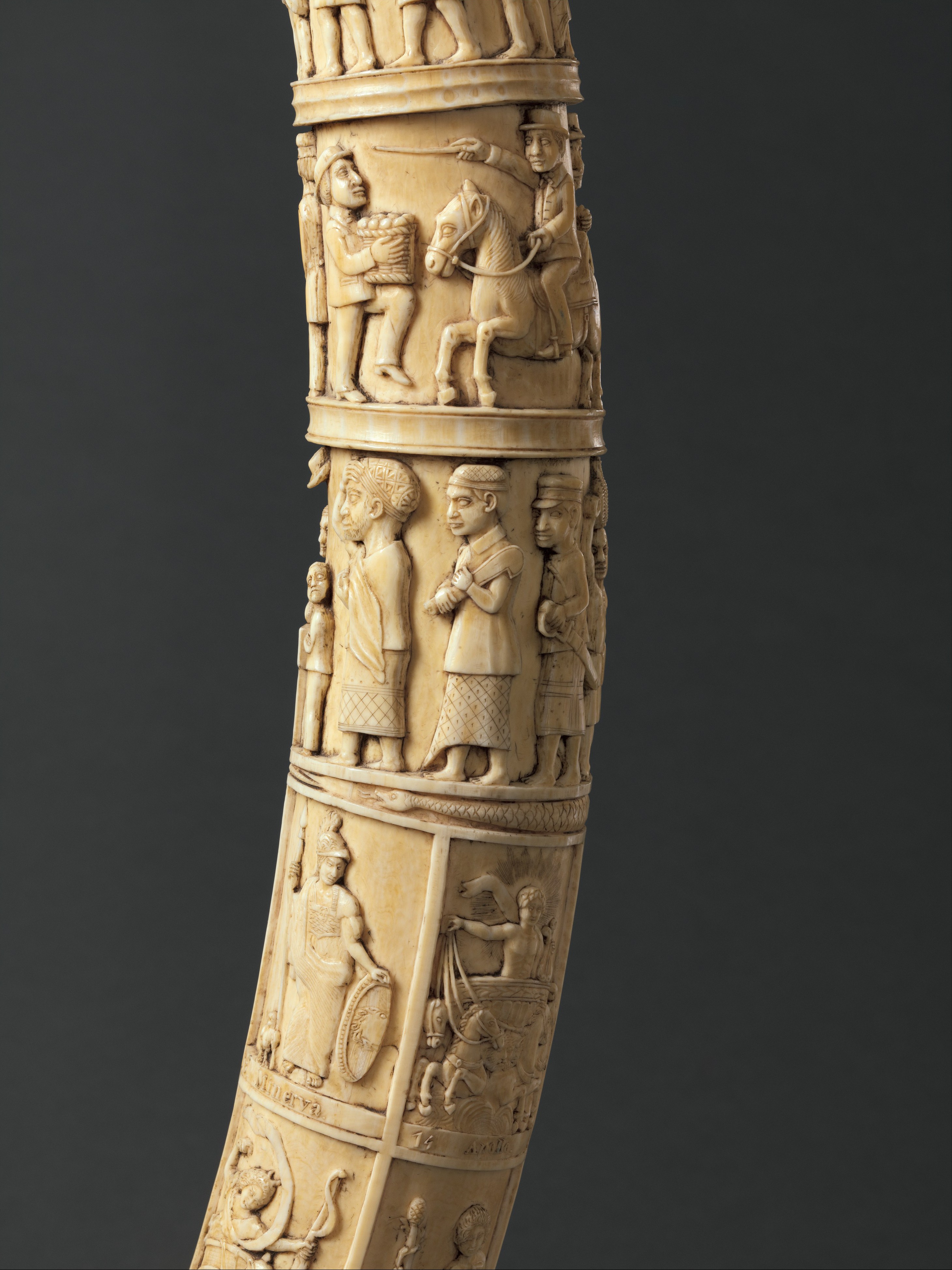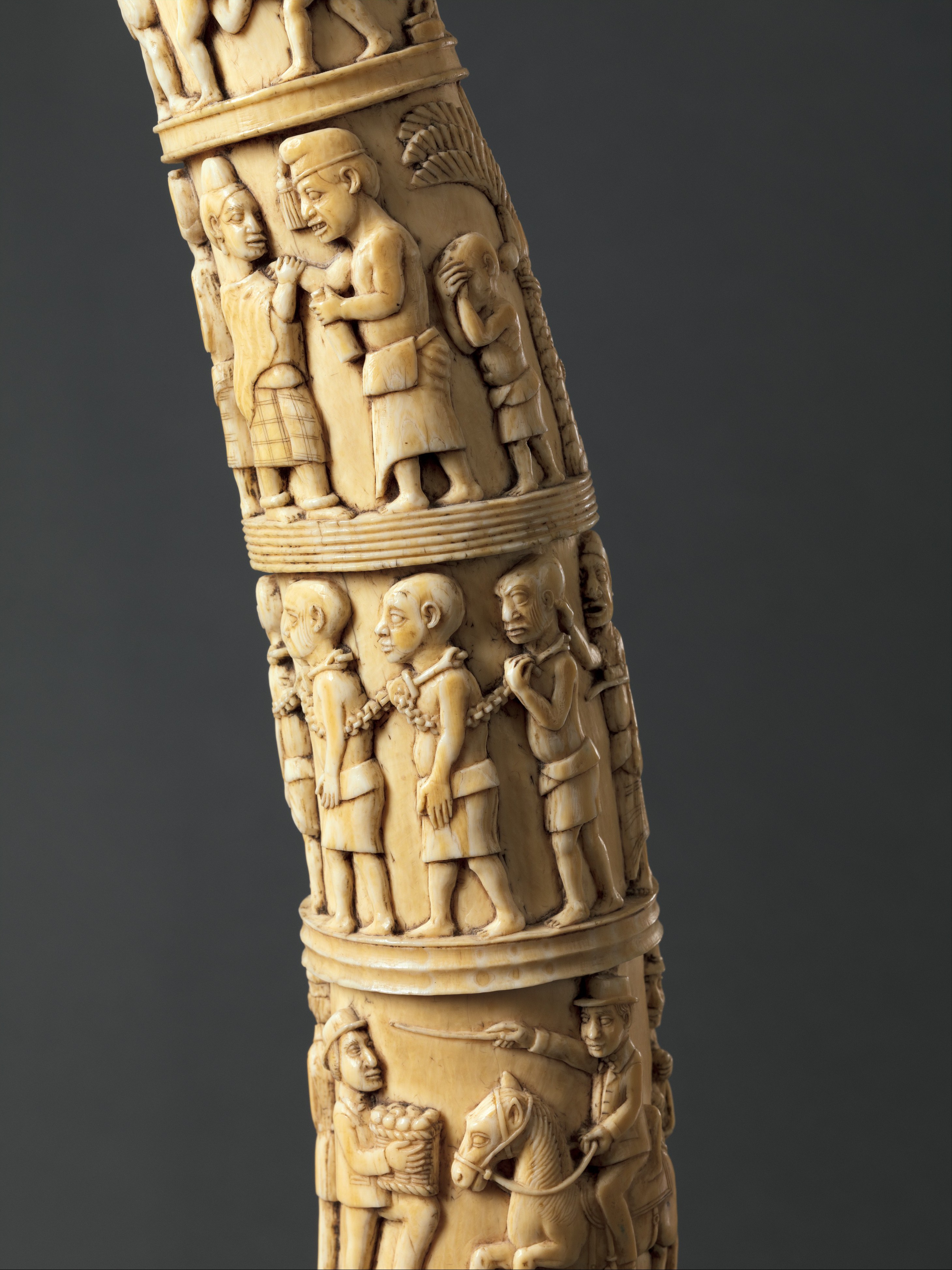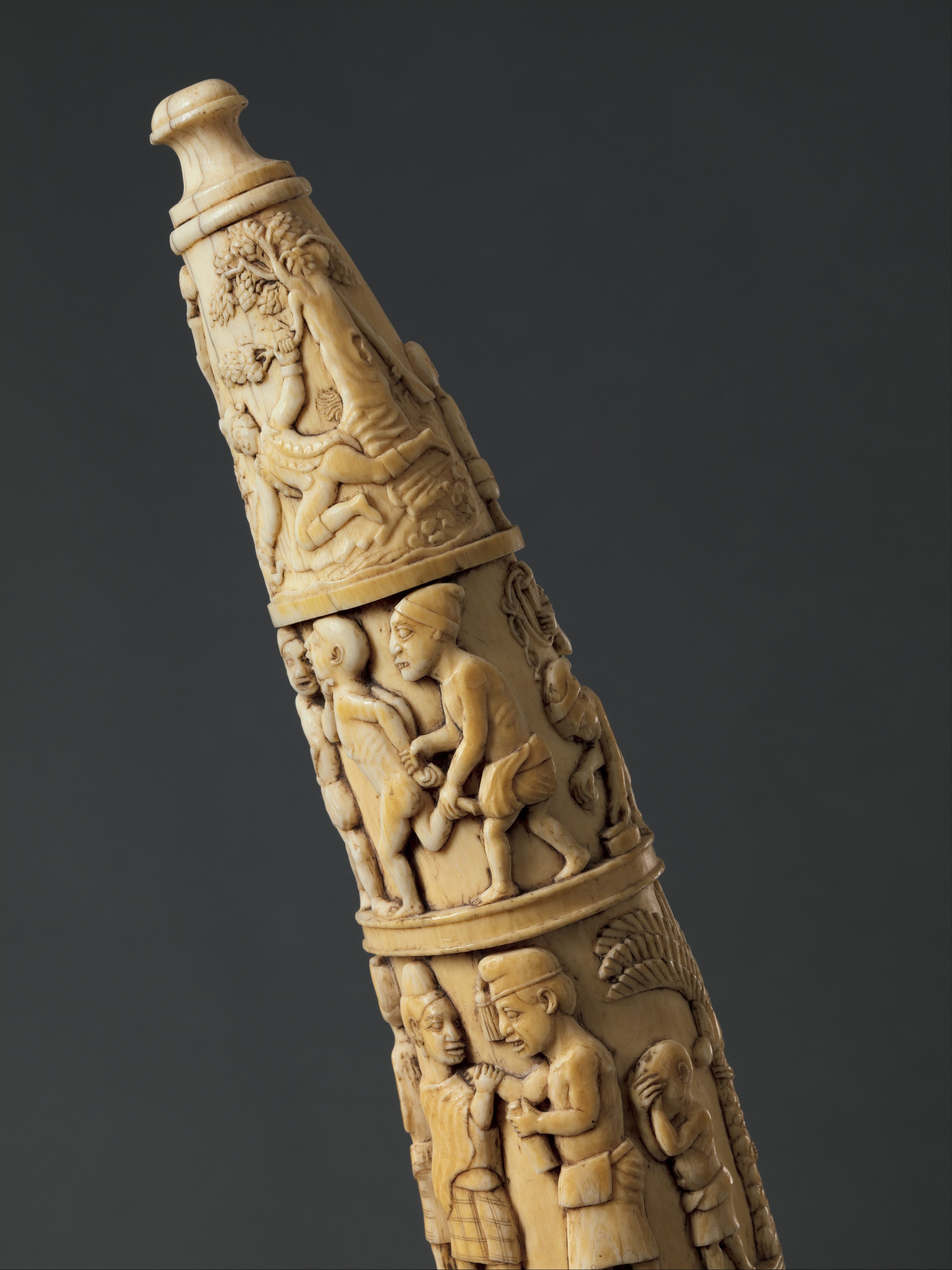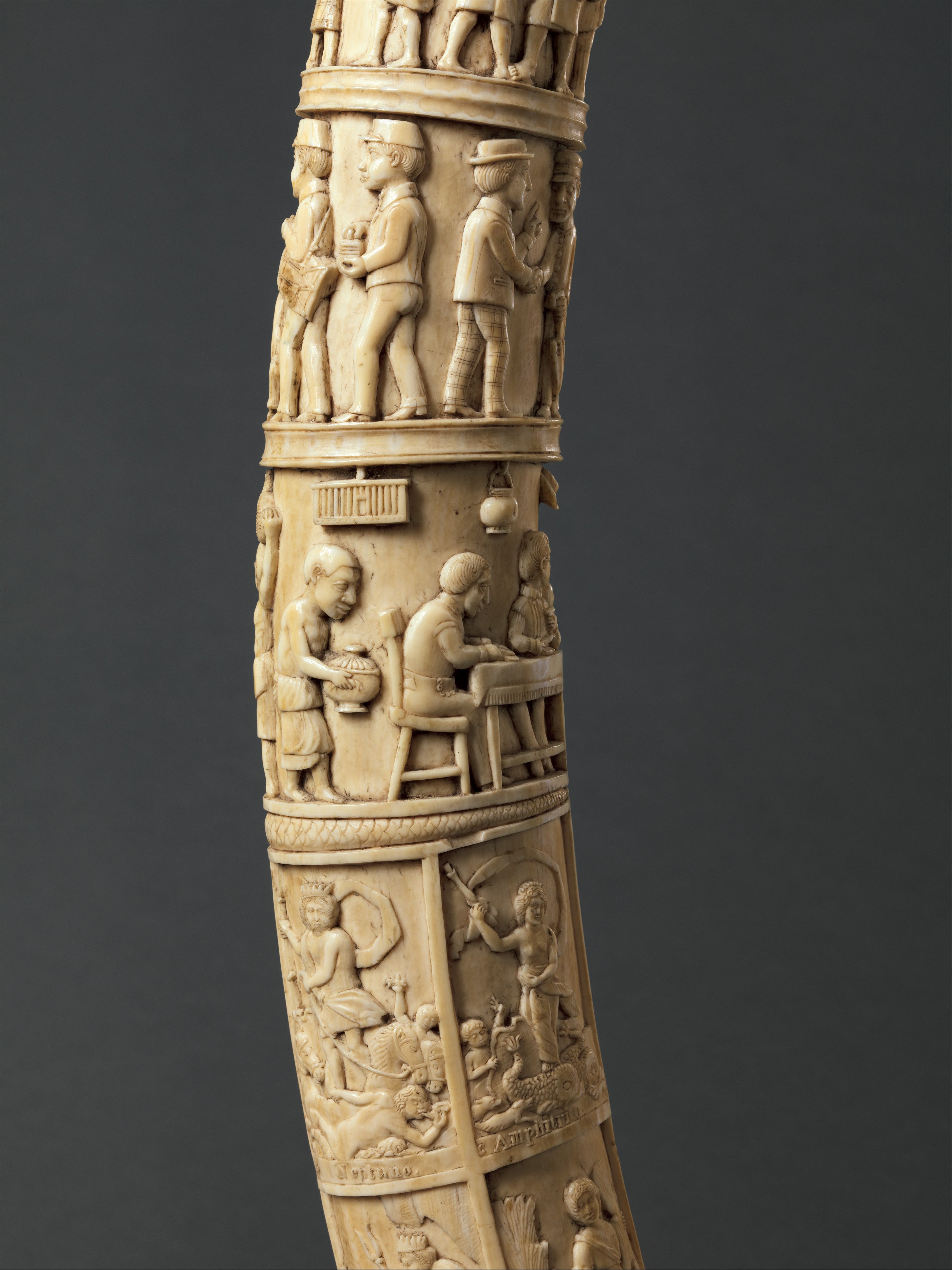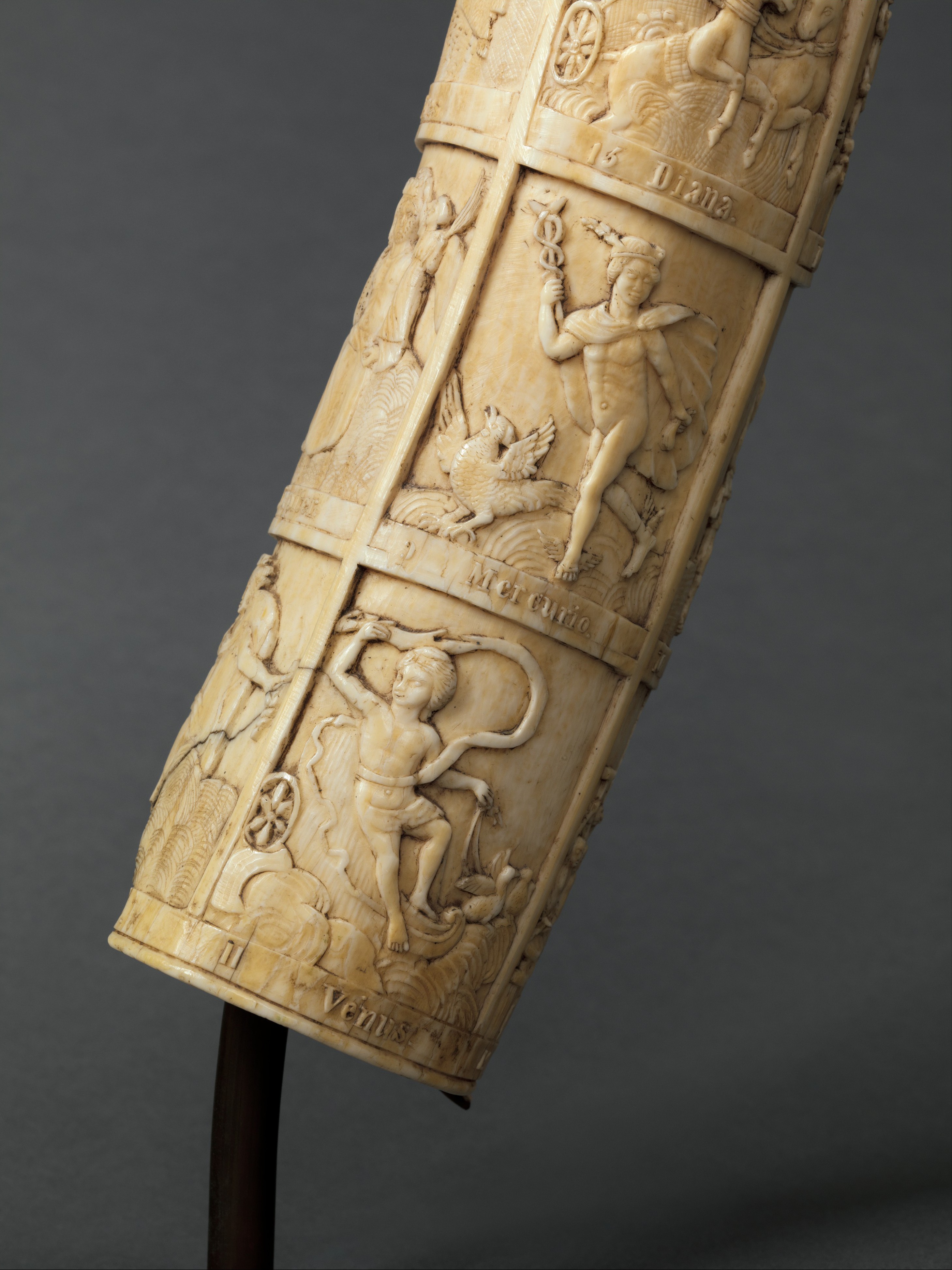Tusk with Figurative Relief
Vili-Kongo artist(s)
Kongo artist
Two distinct casts of characters, rendered in disparate styles, fill the surface of this colossal elephant tusk. Scenes descend from the tip in a spiral that mirrors Kongo notions of the luzîngu (life cycle). These present the brutality of the slave trade, beginning with the violence of capture. Vignettes depicting the forced removal of individuals in bondage are interspersed with those of negotiations between regional chiefs and European merchants, in which textiles feature prominently. The base of the tusk, which has been laid out in a grid, is executed in a shallower, more linear style that suggests the hand of a second carver. That segment depicts the gods and goddesses of the Roman calendar, a subject likely adapted from printed materials provided by a European patron. The repeated violent nature of the quotidian interactions depicted by the artist provides an incisive critique of European exploitation.
This image cannot be enlarged, viewed at full screen, or downloaded.
This artwork is meant to be viewed from right to left. Scroll left to view more.



